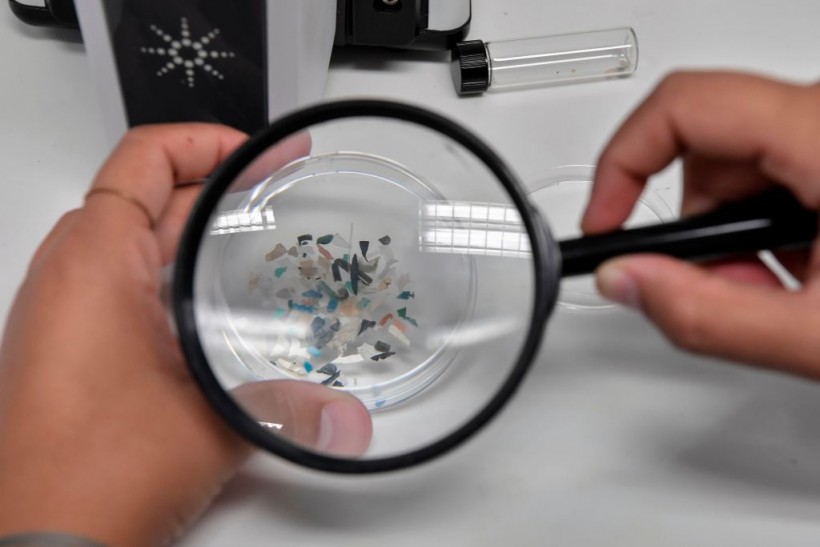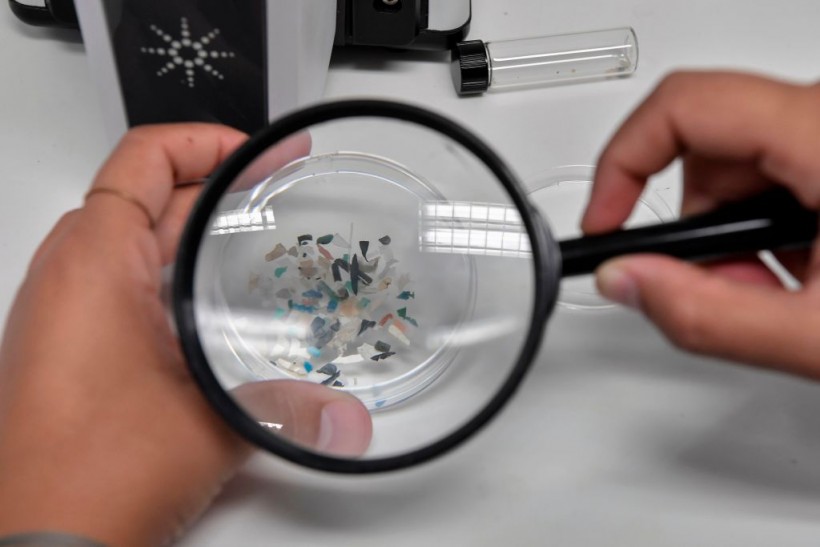[ad_1]
In a groundbreaking learn about, scientists have unveiled a invisible risk lurking within the bottled H2O that many people eat day-to-day.
The usage of complicated imaging era, researchers have found out masses of 1000’s of prior to now uncounted little plastic bits, elevating issues about their have an effect on on human fitness and ecosystems.
A Nearer Have a look at Microplastics

(Picture : LOUISA GOULIAMAKI/AFP by means of Getty Photographs)

(Picture : LOUISA GOULIAMAKI/AFP by means of Getty Photographs)
Scientists from the Columbia Climate School hired lasers to remove darkness from the confidential ultimatum of microplastics living in bottled H2O.
Those debris are so negligible that they departure usual filtration processes and detection forms. The invention underscores an pressing want for enhanced filtration applied sciences and stricter rules on plastic utility and disposal.
The presence of those debris isn’t confined to a particular emblem or area; it’s a world worry. Each sip of bottled H2O probably carries with it an infusion of microplastics, well-known to inadvertent intake by means of billions of family international.
The learn about analyzed 250 bottles from 11 manufacturers bought from 9 international locations, and located that 93% of bottled H2O accommodates microplastics, debris too tiny to look with the bare perceptible however probably hazardous to human fitness.
The typical focus of plastic debris throughout manufacturers was once 325 microplastic debris according to liter of bottled H2O, however some samples contained greater than 10,000 microplastic debris according to liter.
The researchers additionally old a newly subtle era to locate even smaller plastic debris, referred to as nanoplastics, that measure not up to 1 micrometer in space.
They discovered {that a} liter of H2O in a plastic bottle contained a mean of about 240,000 distinguishable plastic fragments – 10 to 100 instances greater than earlier estimates.
Additionally Learn: Recycled Plastics Hurt Climate by means of Leaking Hazardous Chemical compounds, In line with Professionals
Implications for Fitness and Climate
The ingestion of microplastics and nanoplastics isn’t with out repercussions. Despite the fact that analysis into the consequences on human fitness continues to be in its infancy, early findings counsel attainable disruptions to numerous physically techniques.
Ecosystems don’t seem to be excused both; those debris permeate park, breeze, and H2O, affecting each wildlife.
As scientists delve deeper into this factor, questions in regards to the long-term affects on organic techniques abound. There’s an pressing name for complete research to know the breadth and intensity of implications totally.
Some animal and lab research counsel that microplastics would possibly elevate most cancers possibility and pose hurt to the human digestive, reproductive, and breathing techniques.
Analysis additionally has connected micro- and nanoparticles to disrupting thyroid and endocrine serve as, weight problems, and insulin resistance.
Those plastic debris too can move throughout the frame’s protecting tissues and into the bloodstream and organs, or even the mind. They are able to additionally go throughout the placenta to the our bodies of unborn young children
Additionally, those plastic debris can function as magnets for pollution, corresponding to insecticides, bulky metals, and natural contaminants, that can additional building up their toxicity.
Those pollution can upcoming be transferred to the organisms that ingest them, probably inflicting bioaccumulation and biomagnification alongside the meals chain.
The learn about additionally raises questions in regards to the resources and pathways of microplastic and nanoplastic contamination in bottled H2O.
Plastic debris can fracture off and get into bottled H2O when bottles are squeezed or when caps are unscrewed or screwed again on. Over the top warmth publicity too can reason plastic to fracture unwell.
The researchers counsel that extra consideration will have to be paid to the manufacturing, bank, and transportation of plastic bottles, in addition to the disposal and recycling of them.
Similar article: Plastic Recycling Fails as Just a Mere 5% of Plastics from the USA was once Recycled
© 2024 NatureWorldNews.com All rights reserved. Don’t reproduce with out permission.
[ad_2]



